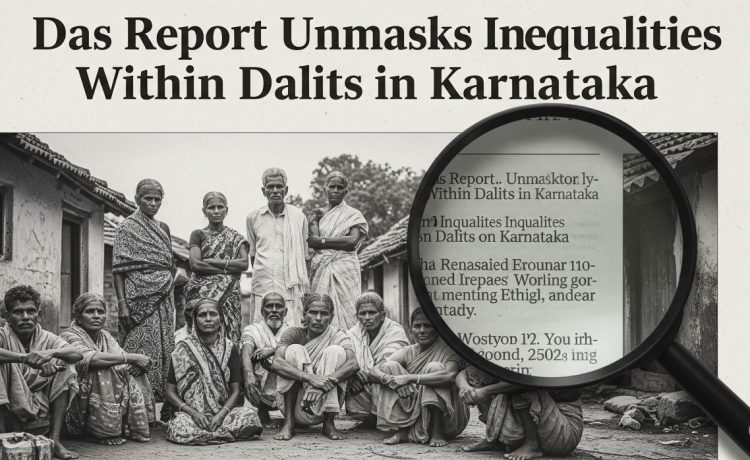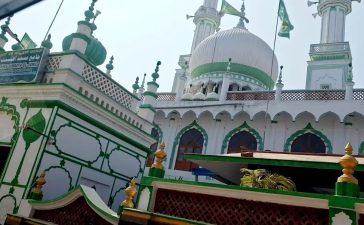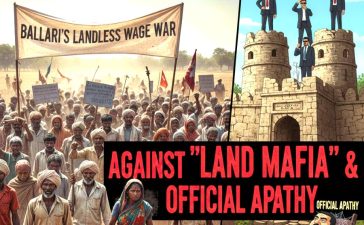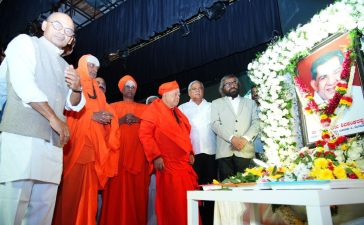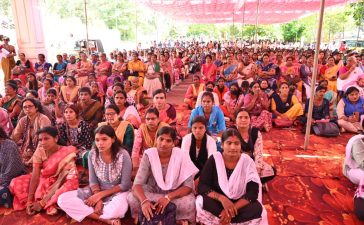What this report is about?
The Justice A.J. Sadashiva (Das) Commission Report revealed stark inequalities within Karnataka’s Scheduled Castes. A few dominant Dalit sub-castes have cornered most benefits of reservation, leaving smaller sub-castes behind. Despite the Supreme Court’s nod for sub-categorization, successive governments have delayed action. Now, the Siddaramaiah government faces mounting pressure to implement internal reservation and ensure social justice.
Karnataka’s Long-Awaited Sub-Quota Battle: Justice or New Divisions?
By Prof Shivasundar
For over 35 years, Karnataka’s most deprived Dalit communities have fought for internal reservation—a fair share within the Scheduled Castes (SC) quota. Their struggle seemed to reach a decisive moment on August 1, 2024, when a seven-judge Constitution Bench of the Supreme Court upheld sub-categorisation within SCs by a 6:1 verdict. The court made it clear: governments cannot delay any longer.
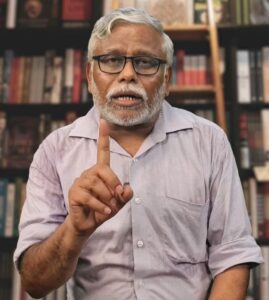
Yet, the Siddaramaiah-led Congress government in Karnataka dragged its feet. Only under pressure did it constitute the Justice Naga Mohan Das Commission to recommend a formula tailored for the state. Despite resistance from within the bureaucracy, the Commission submitted its exhaustive report on August 4. The government has now called a special Cabinet meeting on August 16 to decide its fate.
Meanwhile, the report has leaked. Copies are circulating on social media, and newspapers like Prajavani have published detailed analyses. The government has neither confirmed nor denied its authenticity—making it evident that the leaked version is, in fact, official.
What the Das Commission Recommends
The Commission studied 101 SC sub-castes in Karnataka, representing a population of 1.05 crore (after correcting anomalies and excluding inter-caste marriages). It grouped them into five categories—A to E—based on education, economic conditions, and representation in government jobs.
-
Group A: 59 most deprived sub-castes (5.22 lakh people) → 1% reservation
-
Group B: 18 Madiga-related sub-castes (36.69 lakh) → 6% reservation
-
Group C: 17 Holeya-related sub-castes (30.08 lakh) → 5% reservation
-
Group D: Relatively advanced castes such as Lambani, Bhovi, Korama, Koracha (28.34 lakh) → 4% reservation
-
Group E: 4.74 lakh people registered under generic labels like AK, AD, AA (without disclosing original caste) → 1% reservation
The recommendations have predictably reopened old wounds. The Madiga community, historically the most vocal in demanding sub-quota, wants immediate implementation. Some Holeya leaders have burned copies of the report, alleging it unfairly moves certain sub-castes into the Madiga grouping. Lambani leaders demand further review by a Cabinet sub-committee—widely seen as an attempt to delay. Others argue that the AK/AD/AA category itself should be scrapped and redistributed.
The Core Issue: Unequal Backwardness Within Dalits
The Supreme Court has laid down clear principles:
-
SCs are not homogeneous—inequalities exist within them.
-
Treating unequals equally violates the spirit of reservation.
-
Governments must measure relative backwardness with hard data before granting sub-quotas.
Did the Das Commission follow this? The report shows it did.
Education Gaps
-
Just four sub-castes account for 72% of all SC students passing PUC and 71% of all graduates.
-
Among 11,365 SC medical students, 70% belong to just four groups—Banjara, Bhovi, Holeya, and Madiga.
-
By contrast, 25 sub-castes have not produced a single technical graduate, and 54 sub-castes have not produced a single PhD holder.
Government Jobs
-
Of the total SC workforce in state government, 10 sub-castes dominate.
-
12 sub-castes have never had a single government employee.
-
Women remain severely under-represented. In Lambani sub-castes, there are 4.5 times more men than women in government service.
Political Representation
Even in local bodies, representation is skewed:
-
In municipal corporations, 89 sub-castes have never won a single seat.
-
Panchayat seats are similarly concentrated in the hands of a few sub-castes.
The numbers are unambiguous: Karnataka’s SC communities are internally fractured by deep inequalities.
Justice or Fragmentation?
The Commission has scientifically documented these disparities and offered a formula. But will it deliver justice—or intensify divisions?
Critics say:
-
The 1% quota for 59 most deprived sub-castes (with just 6 lakh people) is tokenistic. Can such a small slice truly uplift them?
-
The report risks fuelling competition between Madiga, Holeya, and Lambani groups—already at loggerheads.
Supporters counter:
-
For decades, benefits of reservation have gone largely to a handful of relatively advanced SCs. The Das formula is the first real attempt at correction.
The Larger Question: Beyond Quotas
At its heart, reservation is not charity—it is a tool to restore dignity and equal citizenship to those historically denied both. But if confined only to government jobs, it risks serving just a small fraction.
Consider this: Karnataka has over 1.05 crore Dalits, but only 1.47 lakh have government jobs—that is barely 1.5%. The other 98.5% still struggle without land, resources, or social dignity.
Meanwhile, privatisation and contractualisation are shrinking government jobs further. Even existing backlog vacancies remain unfilled. Unless the fight for reservation expands into a fight against neoliberal policies and for redistribution of land and resources, justice will remain incomplete.
Conclusion: A Historic Crossroads
The Das Report is far from perfect. Its categories may need fine-tuning. Its allocations may need revision. But it represents a critical step: an official recognition that Dalits are not a monolith—and that justice requires looking within.
The choice before Karnataka is stark:
-
Implement the report and open a new chapter in social justice, however contested.
-
Or delay, dilute, and risk deepening the very inequalities reservation was meant to undo.
As Ambedkar warned, democracy cannot survive without social justice. For Karnataka’s Dalits, the Das Report is not just about jobs—it is about dignity, representation, and the long-delayed promise of equality.
Context & Background
-
Karnataka has 101 Scheduled Castes.
-
Reports (Sadashiva/Das Commission) show 4–5 dominant castes enjoy over 80% of benefits.
-
Smaller Dalit sub-castes lack access to education, jobs, political power.
-
The Supreme Court has cleared sub-categorization of SCs.
-
Movements for “Internal Reservation” have grown in intensity since the 1990s.
-
Political parties, fearing vote bank splits, have delayed implementation.
-
Now, activists say “justice delayed is justice denied.”
Key Quotes
🔹 Activist’s Voice:
“Reservation was meant to uplift all Dalits. But today, only a few sub-castes benefit. Unless internal reservation is implemented, social justice will remain incomplete.” – Dalit Rights Forum, Bengaluru
🔹 Government Perspective:
“The report is sensitive, and we must balance justice with unity. The government will take a decision that respects both the Constitution and the aspirations of every community.” – Senior Karnataka Minister
🔹 Community Member’s Quote:
“For decades, my community has remained invisible in education and jobs. The Das report gives us hope that our children may finally get a chance.” – Ramesh, youth from Madiga community
Q & A Section
Q: What is the Das Commission Report?
A: It is a study on disparities among Dalit sub-castes in Karnataka. It recommends sub-categorization of reservation benefits so that smaller, deprived castes get fair representation.
Q: Why is it controversial?
A: Some dominant Dalit sub-castes oppose internal quotas, fearing their share will reduce. Political leaders also fear losing vote banks.
Q: Has the Supreme Court approved it?
A: Yes, the Court has upheld the principle of sub-categorization within SCs. Implementation is now in the state’s hands.
Q: What do activists demand?
A: Immediate implementation of the report’s recommendations, arguing that delay only deepens inequality within Dalits.
#DasReport #DalitJustice #InternalReservation #SocialJustice #EqualityNow
![]()

